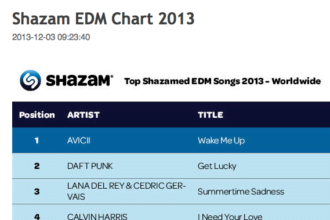Ensemble models seem to be all the buzz at the moment. The NetFlix prize was won by a conglomerate of various models and approaches that each excelled in subsets of the data.
A number of data miners have presented findings based upon using simple ensembles that use the mean prediction of a number of models. I was surprised that some form of weighting isn’t commonly used, and that a simple mean average of multiple models could yield such an improvement in the global predictive power. It kinda reminds me of Gestalt theory phrase “The whole is greater than the sum of the parts.” It’s got me thinking, when it is best not to share predictive power. What if one model is the best? There is also a ton of considerations regarding scalability and trade-off between additional processing, added business value, and practicality (don’t mention random forests to me…), but we’re pretend those don’t exist for the purpose of this discussion 🙂
So this has got me thinking do ensembles work best in situations where there are clearly different sub-populations of customers. For example, Netflix is in the retail space, with many customers that rent the same popular blockbuster movies, and a moderate .. …
Ensemble models seem to be all the buzz at the moment. The NetFlix prize was won by a conglomerate of various models and approaches that each excelled in subsets of the data.
A number of data miners have presented findings based upon using simple ensembles that use the mean prediction of a number of models. I was surprised that some form of weighting isn’t commonly used, and that a simple mean average of multiple models could yield such an improvement in the global predictive power. It kinda reminds me of Gestalt theory phrase “The whole is greater than the sum of the parts.” It’s got me thinking, when it is best not to share predictive power. What if one model is the best? There is also a ton of considerations regarding scalability and trade-off between additional processing, added business value, and practicality (don’t mention random forests to me…), but we’re pretend those don’t exist for the purpose of this discussion 🙂
So this has got me thinking do ensembles work best in situations where there are clearly different sub-populations of customers. For example, Netflix is in the retail space, with many customers that rent the same popular blockbuster movies, and a moderate number of customers that rent rarer (or far more diverse, i.e., long tail) movies. I haven’t looked at the Netflix data, so I’m guessing that most customers don’t have hundreds of transactions, so generalising the correct behaviour of the masses to specific customers is important. Netflix data on any specific customer could be quite scant (in terms of rents/transactions). In other industries such as telecom, there are parallels; customers can also be differentiated by nature of communication (voice calls, sms calls, data consumption etc) just like types of movies. Telecom is mostly about quantity though (customer x used to make a lot of calls etc). More importantly there is a huge amount of data about each customer, often with many hundreds of transactions per customer. There is therefore relatively lesser reliance upon supporting behaviour of the masses (although it helps a lot) to understand any specific customer.
Following this logic, I’m thinking that ensembles are great at reducing the error of incorrectly applying insights derived from the generalised masses to those weirdos that rent obscure sci-fi movies! Combining models that explain sub-populations very well makes sense, but what if you don’t have many sub-populations (or can identify and model their behaviour with one model).
But you may shout “hey, what about the KDD Cup.” Yes, the recent KDD Cup challenge (anonymous featureless telecom data from Orange) was also a won by an ensemble of over a thousand models created by IBM Research. I’d like to have had some information about what the hundreds of columns respresented, and this might have helped better understand the Orange data and build more insightful and performing models. Aren’t ensemble models used in this way simply a brute force approach to over learn the data? I’d also really like to know how the performance of the winning entry tracks over the subsequent months for Orange.
Well, I haven’t had a lot of success in using ensemble models in the telecom data I work with, and I’m hoping it is more a reflection of the data than any ineptitude on my part. I’ve tried simply building multiple models on the entire dataset and averaging the scores, but this doesn’t generate much additional improvement (granted on already good models, and I already combine K-means and Neural Nets on the whole base). During my free time I’m just starting to try splitting the entire customer base into dozens of small sub-populations and building a Neural Net model on each, then combining the results and seeing if that yields an improvement. It’ll take a while.
Thoughts?






